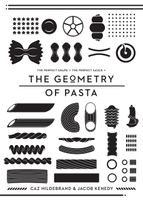Advertisement
Cannelloni
By Caz Hildebrand and Jacob Kenedy
Published 2010

Cannelloni are sheets of pasta wrapped around a sausage of filling and baked. It is possible to buy dried tubes of pasta to blanch and stuff, but to my mind these should really be called manicotti. Their name derives from canna (cane), thus cannelloni means ‘large reeds’ – the same stem as cannella (cinnamon – ‘little reed’). The idea of stuffing a soft pastry with a savoury filling isn’t new in Europe – crêpes have been around for ever, and references to macheroni ripieni date back to around 1770 – but cannelloni were first mentioned in print at the beginning of the 20th century, likely the time they were invented. Their popularity took off and went global after the Second World War, for the dual reasons of their ease of advance preparation (they can be made ready to go in the oven even the day before), and being the symbol of domestic bliss – the housewife at her gleaming white enamel oven. The pasta can be replaced with a crêpe in all recipes, if that seems easier or better to you; in both forms, cannelloni are equally popular in Italy, the UK, the USA and Spain, Catalonia in particular.



